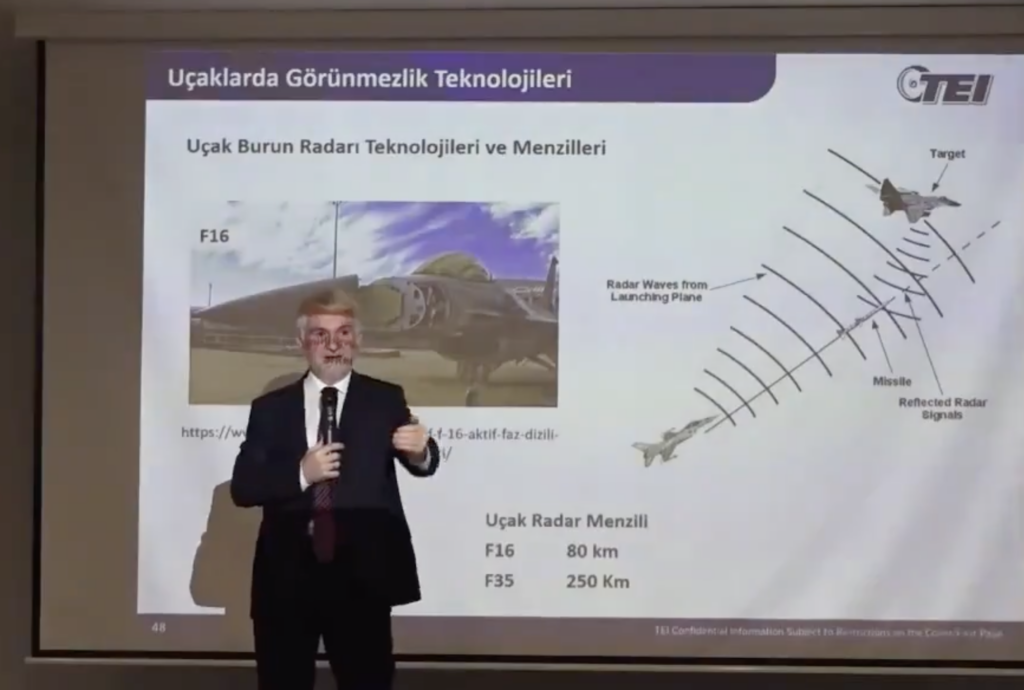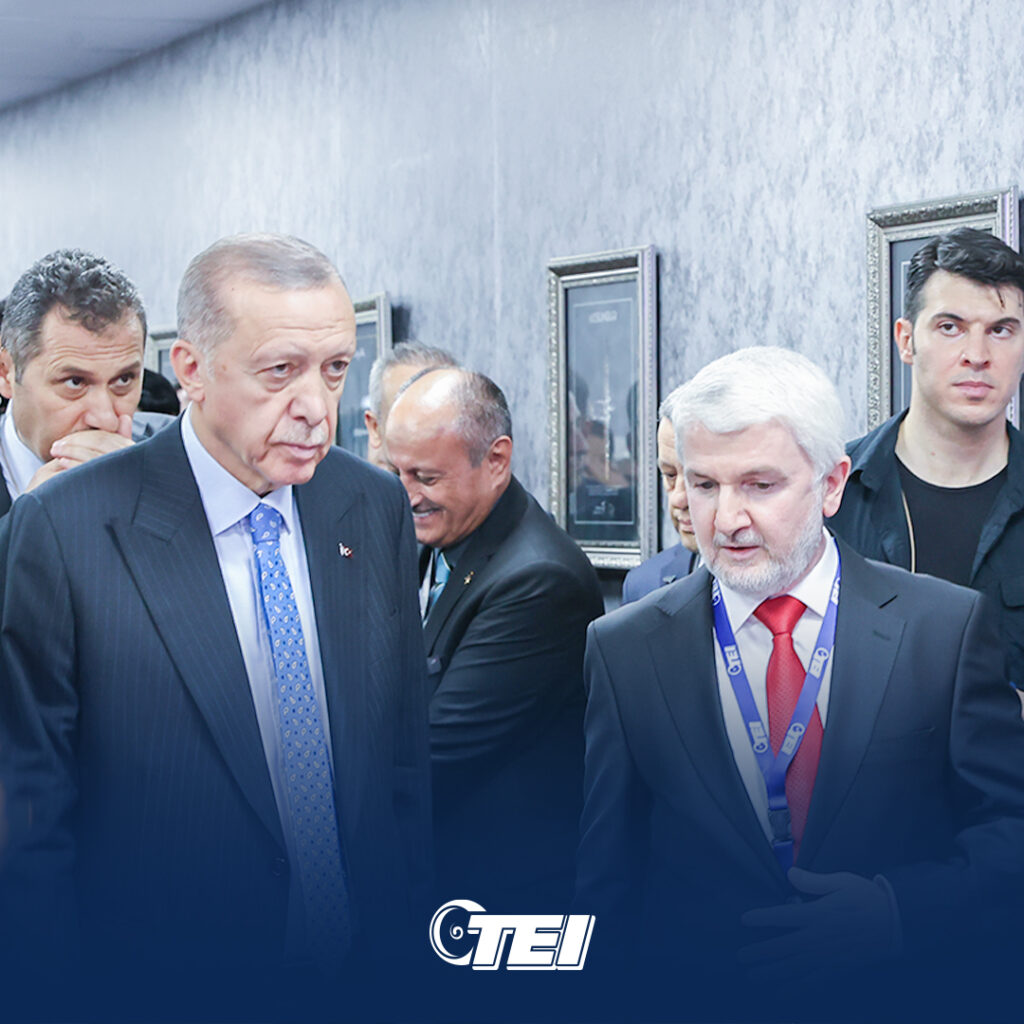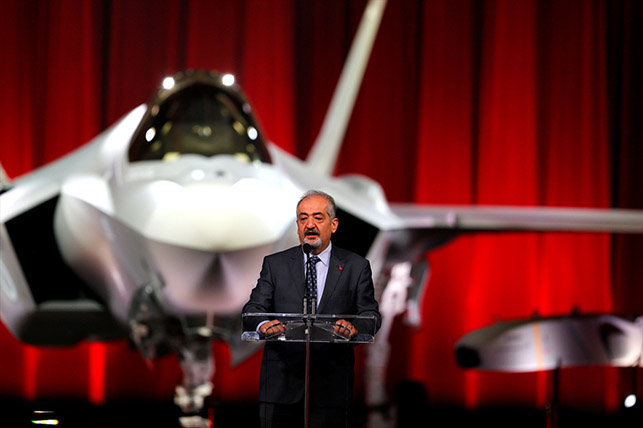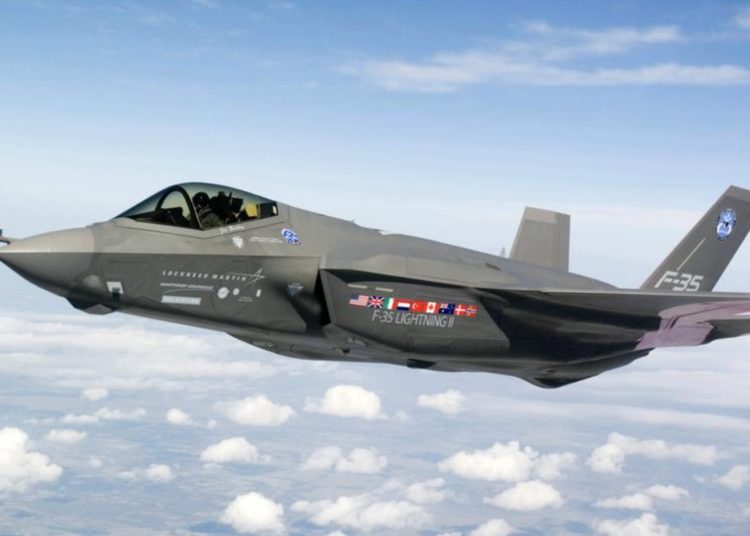Levent Kenez/Stockholm
Mahmut Faruk Akşit, general manager of TUSAS Engine Industries (TEI), was a presenter at a panel discussion organized by Pamukkale University on October 26, where he discussed fifth-generation aircraft, comparing the F-35 and F-16 jets. He claimed that the US did not sell the F-35 to Turkey due to its superior capabilities. However, it is important to note that Turkey was one of the supplier nations in the F-35 program and took delivery of its first aircraft in 2018 in the United States. But Turkey was removed from the project in 2021 due to Ankara’s purchase of the Russian S-400 missile system, and the aircraft never actually left the US.
Speaking about the stealth technology and radar capabilities of the aircraft, Akşit emphasized the advantages of the F-35 over the F-16. “There is a radar at the front designed to detect incoming enemies,” he said. “If you look at the radar technology, the F-16 has a radar range of 80 kilometers, while the F-35’s range extends to 250 kilometers.”

“Imagine a scenario where the F-35 and the F-16 are flying towards each other. You’re in the F-16 and see nothing on the horizon. Meanwhile, the pilot in the F-35 can see you clearly, like looking in a mirror. He locks onto you and fires a missile. You might only see the missile coming your way, but you can’t even see the enemy aircraft. Do you understand now why they haven’t sold us the F-35?” he added.
Professor Akşit is one of the prominent bureaucrats in the government of President Recep Tayyip Erdogan and the son of Cevat Akşit, a theologian known for frequently preaching in support of the ruling party. In 2013 he was appointed general manager of TEI, a subsidiary of Turkish Aerospace Industries (TAI).
However, Turkish government officials have previously provided various explanations regarding the country’s lack of F-35 fighter jets. For instance, on December 26, 2023, Fuat Oktay, the former vice president, claimed during a parliamentary Foreign Relations Committee meeting that Turkey had independently decided against acquiring the F-35.

Oktay said both the Ministry of Defense and the chief of general staff had long ago expressed a lack of interest in the F-35. He emphasized the position of the Turkish Armed Forces (TAF) and the government, advocating for the procurement of the F-16 Block 60, a 4.5-generation aircraft, which they considered a more suitable option.
According to Oktay, the declining appeal of the F-35 was linked to a series of accidents and technical deficiencies that diminished its attractiveness. He claimed that Turkey’s shift back to the F-16 was not due to an inability to acquire the F-35 but rather a lack of significant interest in the aircraft.
Turkey became part of the F-35 program on July 11, 2002, the seventh international partner in the Joint Strike Fighter (JSF) program, joining the United Kingdom, Italy, the Netherlands, Canada, Denmark and Norway when it signed a memorandum of understanding on F-35 system development and demonstration, an initial phase of the JSF.

Moreover, on June 20, 2018, a ceremony took place at the Lockheed Martin facilities in Texas to mark the delivery of the first aircraft as part of the F-35 project. At the ceremony the then-head of the Undersecretariat for the Defense Industry (later renamed the Presidency of the Defense Industry, SSB), Serdar Demirel, representing the government, said participation in the F-35 project was an honor for Turkey. The aircraft was expected to be brought to Turkey in 2019 following the completion of pilot training; however, that never took place because the US administration officially removed Turkey from the F-35 Joint Strike Fighter program due to Ankara’s purchase of the Russian S-400 missile system in 2017. The US argued that the integration of a Russian defense system into a NATO country’s defense framework, while also possessing flight data related to the F-35, would jeopardize NATO’s security.
According to former Turkish defense minister Hulusi Akar, the expulsion would cost Turkey $11 billion in export revenue as some of the components for the F-35s would no longer be manufactured in Turkey.
Unable to acquire the F-35, Turkey decided to modernize its aging fleet of F-16s. However, this plan faced obstacles due to US restrictions. Ultimately, Turkey managed to ease some of these barriers by approving NATO membership for Sweden and Finland. As a result, the US lifted restrictions on the sale of F-16 jets and modernization kits to Turkey.
Meanwhile, Turkey continues to show interest in acquiring 40 Eurofighter Typhoon jets, even as the US moves forward with a $23 billion sale of F-16 fighter jets to Ankara.

One of the key points frequently highlighted by Erdogan is Turkey’s ambition to produce its own fifth-generation fighter jet. The TAI KAAN, also known as the TF (Turkish Fighter) or Milli Muharip Uçak (MMU) in Turkish, is an advanced twin-engine stealth fighter currently under development by Turkish Aerospace Industries. British company BAE Systems is acting as a subcontractor for this ambitious project. The main goals of the KAAN program include replacing the aging F-16 aircraft currently in service with the Turkish Air Force and potentially offering the aircraft for export to other countries. However, the project faces challenges since a reliable supply chain for the engines needed for the KAAN has not yet been established and financial issues continue to be a concern.












